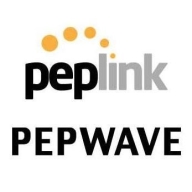


Forcepoint Next Generation Firewall and Peplink SpeedFusion compete in the firewall market. Peplink SpeedFusion seems to have the upper hand due to its comprehensive features, making it worth the higher price.
Features: Forcepoint Next Generation Firewall offers high-security measures, complex logging capabilities, and efficient customer support. Peplink SpeedFusion provides advanced network bonding, seamless failover, and superior advanced networking solutions.
Room for Improvement: Forcepoint needs better threat detection, enhanced reporting tools, and improved security capabilities. Peplink requires more detailed documentation, improved technical support, and slight documentation enhancements.
Ease of Deployment and Customer Service: Forcepoint Next Generation Firewall has a complex and time-consuming setup but with highly rated customer service. Peplink SpeedFusion features a simpler deployment process but mixed reviews for customer support.
Pricing and ROI: Forcepoint has reasonable setup costs and good ROI. Peplink SpeedFusion, despite higher initial costs, offers advanced features and strong ROI, making it appealing for those needing advanced functionality.
Clients are now comfortable and not wasting productive hours on IT support.
We have experienced a positive return on investment by utilizing Fortinet's products.
There's definitely an ROI. Having a centralized way of managing and applying policies across the entire organization always helps.
Cybersecurity ROI could be $1 or $100 million, depending on the risk of data behind it.
He explained that it required a command line configuration, as it couldn't be done through the graphical user interface.
I would rate their support for FortiGate a nine out of ten.
They offer very accurate solutions.
Unlike Fortinet where you can escalate an issue and quickly get responses from the development team, Forcepoint's process seems slow and challenging.
Technical support is sometimes slow to respond, and it takes longer to resolve issues.
They scale up really well from smaller models like the FortiGate 40 and 50 to bigger sites with the FortiGate 100 for more throughput - up to enterprise datacenters.
The variation comes in terms of the interfaces and throughputs, but from a security perspective, you get the same benefit, irrespective of whether you have an entry-level unit or an enterprise.
There are many options available, and we can choose the size of the box based on our requirements.
There are restrictions in the firewall manager and limitations when deploying for cloud environments.
There are no bugs or glitches, and it doesn't crash or freeze.
Improper handling of these can lead to a memory surge, a well-known bug that can cause the entire system to freeze.
It is less stable than Palo Alto Networks and Check Point firewalls because there are lots of bugs in the latest firmware.
If I have put 10 GBPS of throughput on a firewall and I enable all of these features available, such as IPS or UTM functionalities, the throughput comes down to 1 GBPS.
By providing an integrated solution, users would have access to all features and functionalities within a single window, eliminating the need to navigate through multiple windows.
Investing in a solution that can accommodate such growth would be more cost-effective than repeatedly purchasing new hardware.
Fast response and efficient handling of issues, similar to how Fortinet responds, would be great.
I recommend that additional features be included in a single license to avoid the need for extra licensing costs.
Secure SD-WAN is free of charge.
The most expensive part is the renewal of the license subscription.
FortiGate is priced lower than Palo Alto.
The costs can be high since additional features require separate licenses.
In terms of pricing, I would place Forcepoint in the middle when compared to other firewalls like Fortinet and Palo Alto.
It's easy to monitor the end-to-end network through the firewall.
The firewall, IPS, and VPN functions are the most valuable features.
FortiGate provides solid protection against viruses, malware, and other threats.
With Forcepoint, this process is simplified compared to others like Fortinet.
The most valuable features of Forcepoint Next Generation Firewall are the advanced threat protection, including features like IPS and DDoS prevention, which help avoid internal DDoS attacks.



Fortinet FortiGate offers comprehensive network security and firewall protection across multiple locations. It effectively manages data traffic and secures environments with features like VPN, intrusion prevention, and UTM controls.
Organizations rely on Fortinet FortiGate for its robust integration with advanced security policies, ensuring significant protection for enterprises, cloud environments, and educational sectors. It facilitates network segmentation, application-level security, and authentication management, securing communication within and between locations such as branches and data centers. Its efficient SD-WAN and UTM features enable streamlined data management and enhanced threat protection capabilities. Users appreciate its centralized management, facilitating seamless operations across diverse environments.
What are the key features of Fortinet FortiGate?
What benefits should users expect from Fortinet FortiGate?
Fortinet FortiGate is crucial in sectors like education, offering robust networks for secure data flow between campuses and facilitating remote learning. In enterprise environments, it allows efficient management of application traffic and security across multiple branches, while in the cloud, it seamlessly integrates with diverse platforms to enhance security infrastructure.
Forcepoint Next Generation Firewall is a versatile and comprehensive solution for perimeter security, offering features such as SD-WAN, IPS, VPN, and cloud or on-premises subscription keys. It is preferred by many clients over Cisco and is used for obligation redundancy, VPN access, and as the main point of security in infrastructure.
The product is praised for its simplicity, flexibility, complete feature set, scalability, and central management capabilities. Other valuable features include IPS, firewall, sandbox, application control, filtering, security management center, connectivity, and integration capabilities.
Peplink’s patent-pending SpeedFusion technology powers enterprise VPNs that tap into the bandwidth of up to 13 low-cost cable, DSL, 3G/4G/LTE, and other links connected anywhere on your corporate or institutional WAN. Whether you’re transferring a few documents or driving realtime POS data, video feeds, and VoIP conversations, SpeedFusion pumps all your data down a single fat datapipe that’s budget-friendly, ultra-fast, and easily configurable to suit any networking environment.
We monitor all Software Defined WAN (SD-WAN) Solutions reviews to prevent fraudulent reviews and keep review quality high. We do not post reviews by company employees or direct competitors. We validate each review for authenticity via cross-reference with LinkedIn, and personal follow-up with the reviewer when necessary.